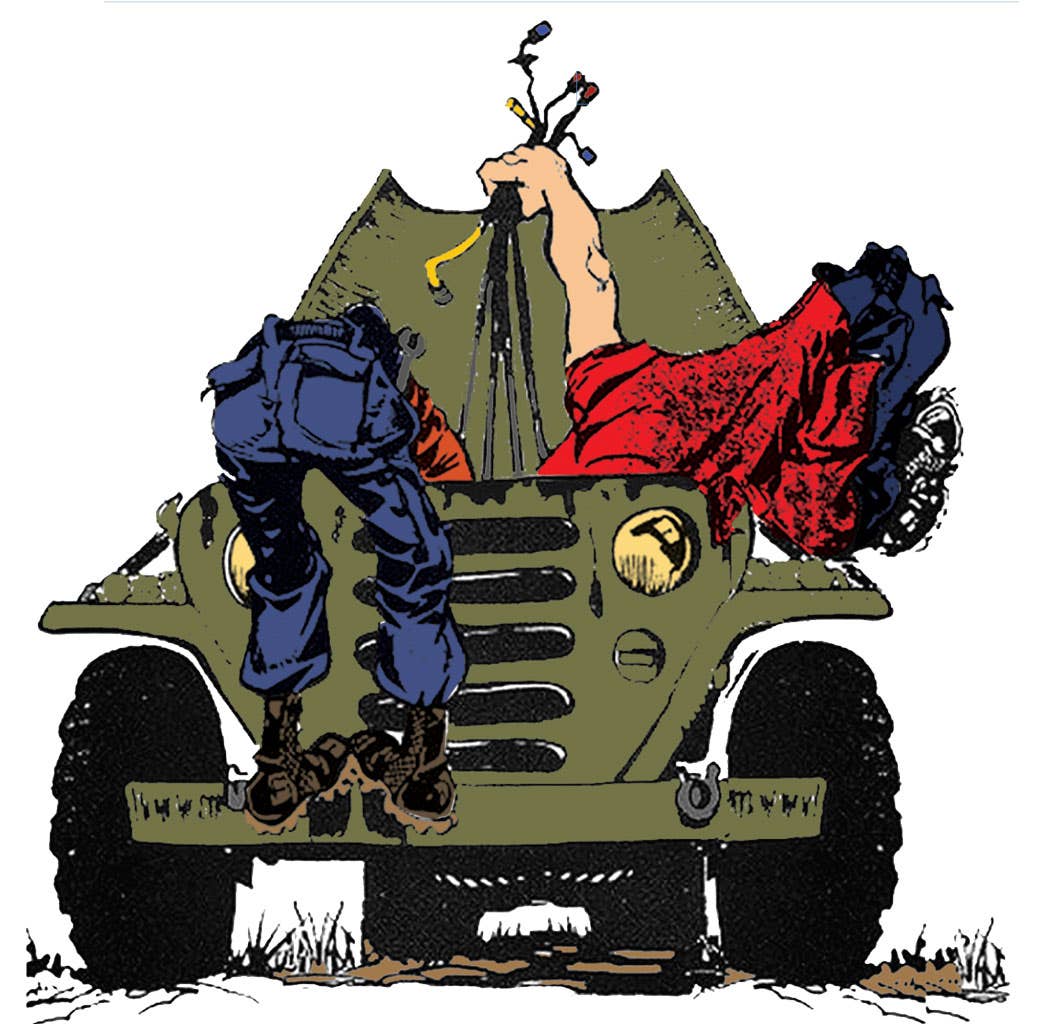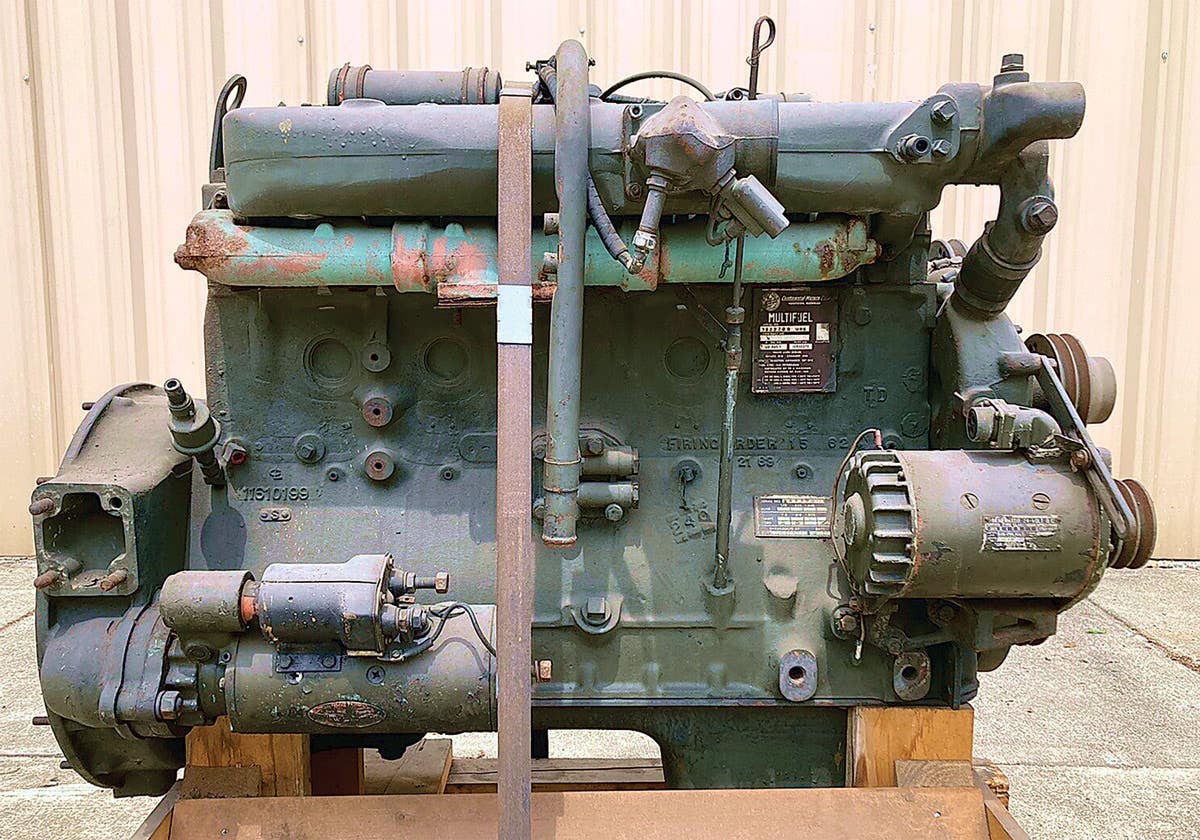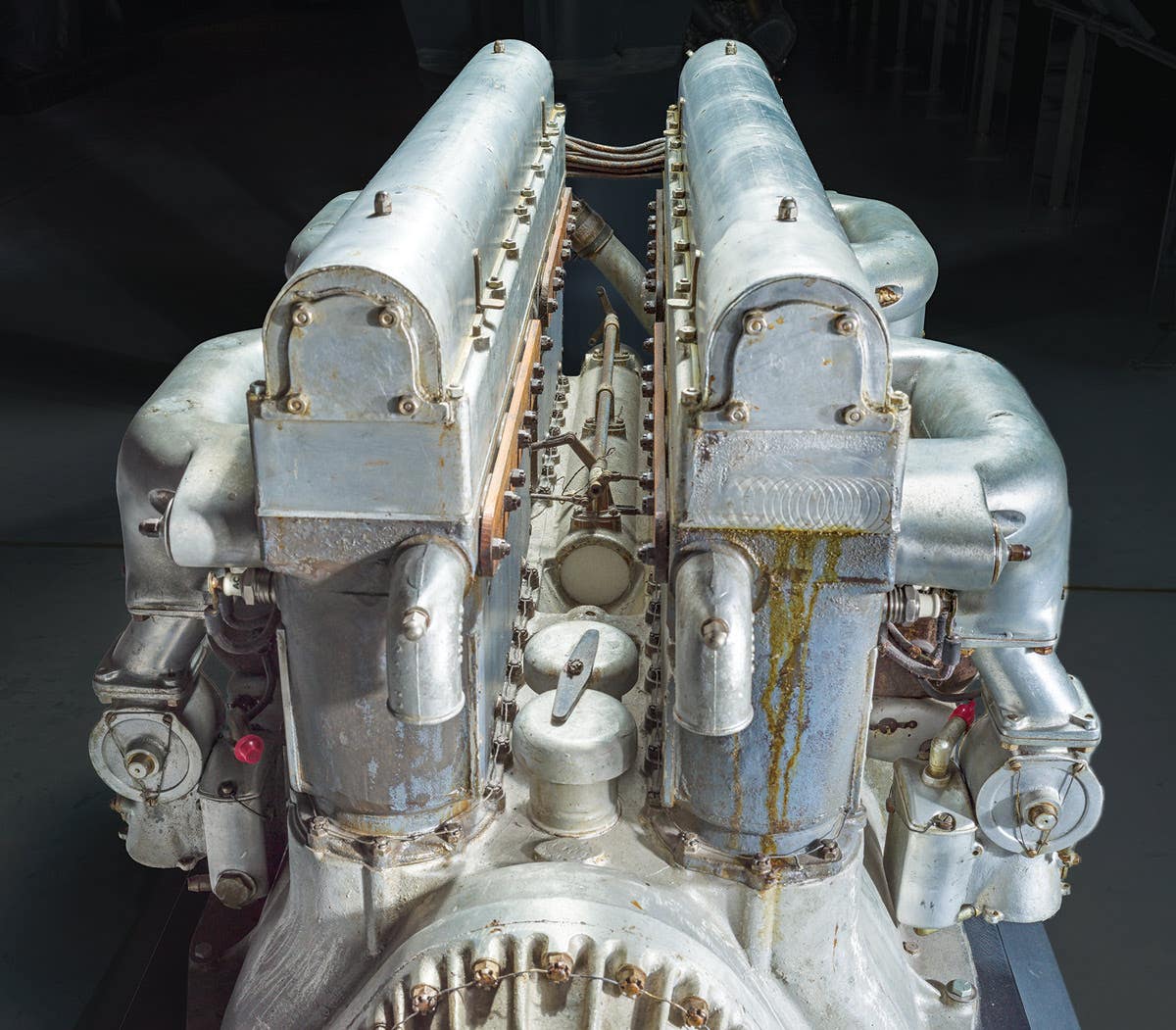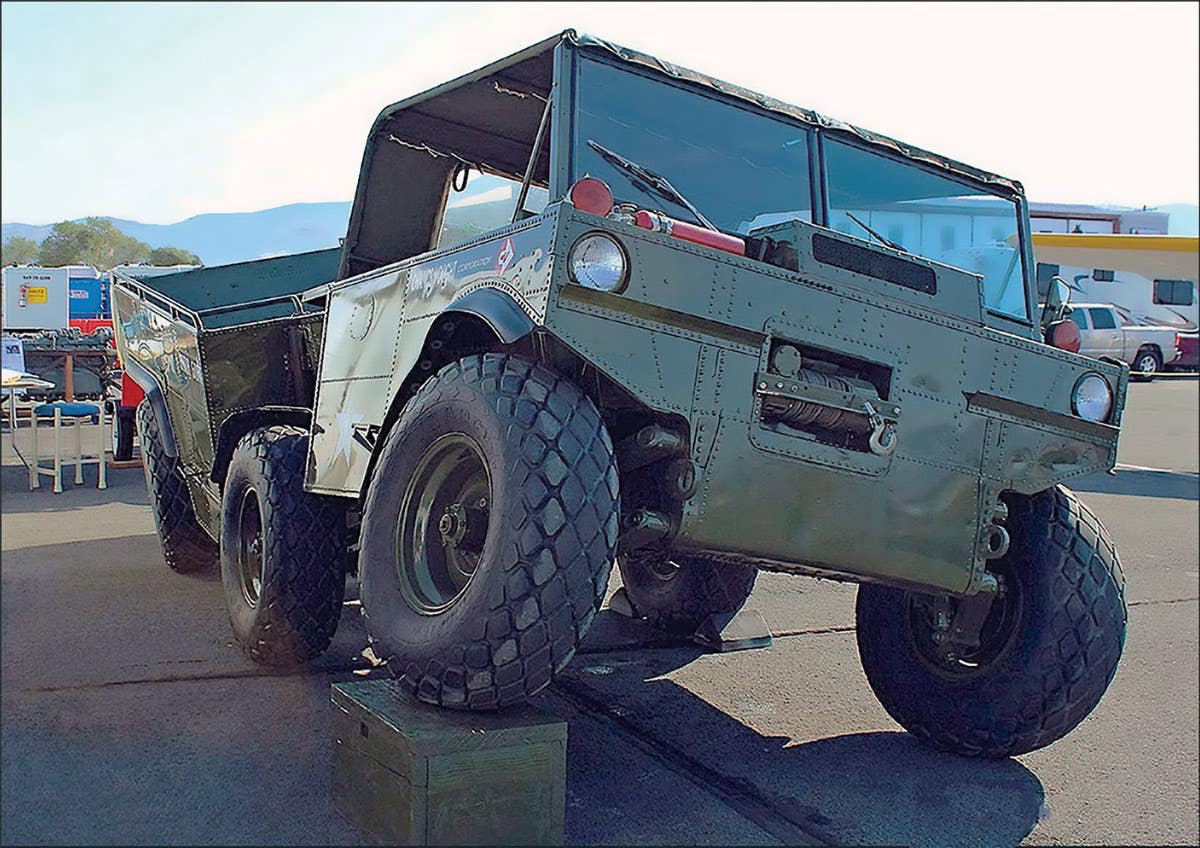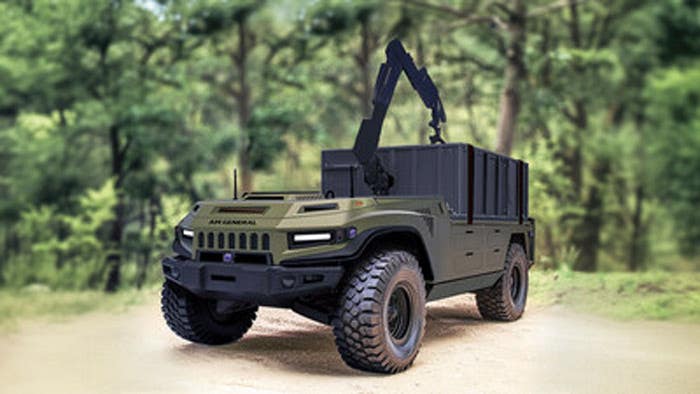Temperamental clutches, M37 tire pressure and ‘Bungle in the Jungle’ in this installment of Tech Tips
Something not right with your historic military vehicle? Steve Turchet answers your questions on how to keep ’em movin’!
A temperamental clutch
Q: I have a 1968 M151A2. The clutch pedal starts releasing al-most as soon as I step on it. Does this mean the clutch has to be adjusted? If it does, how do I do that? — Josh McKenzie
A: Like many automotive terms, clutch adjustment can be misleading. While the clutches of most large, heavy trucks, and large equipment such as bulldozers can be adjusted for wear, the clutches of most light vehicles, such as jeeps and MUTTS cannot. The only thing that can be adjusted on most light vehicles is the clutch pedal free play. This means the point at which stepping on the pedal pushes the clutch release bearing against the clutch fingers or diaphragm to begin releasing the clutch. As the clutch disk material wears, the clutch pedal release point gets gradually higher. For most vehicles, the clutch release point should be set about midway down from when one first steps on the pedal. This usually gives about two or three inches of free play, though you should consult your service manual for the recommended adjustment. Pushing down on the pedal with your hand will enable you to feel when the clutch fork contacts the release bearing. I suspect your clutch disk may be badly worn and needs replacement.
M37 Tire Pressure
Q&A: What’s the correct tire pressure for your M37 or M37B1? Some of the vehicle data plates say 40 PSI and some say 45 PSI. The ones that say 40 PSI are right. So if you have a data plate that reads 45, blot out the 5 and stamp a 0 in its place like it tells you to in TB9-2320/3 — PS Magazine, July, 1962
Bungle In The Jungle
Q: My grandfather is a Vietnam vet who was drafted. He was not gung-ho about what he calls the “Bungle In The Jungle”, but he has always liked old military vehicles and I have, too. We have two jeeps on our ranch, a Willys MB and a Willys M38. They are not restored but they are painted olive drab and mostly stock. I have a chance to buy a Kaiser Jeep M715 pickup. It has been re-powered with a Cummins JT six-cylinder diesel engine and a Clark five-speed transmission with overdrive 5th gear. It is an old conversion that was done in the 1970s and was done by a professional truck mechanic. Except for this, the truck is stock and looks very nice. The truck seems to run and drive very well but I’m worried because the engine is very loud and smokes a lot. The truck will run on the road at 60 mph in 5th gear, and has a lot of power off the road, but you need earmuffs to drive it! The guy says this is normal for this engine and the engine is in good shape. Have you had any experience with Cummins JT engines? — Phil
A: As the cyber-kids say, OMG! When I think of all the diesel engines that could have been put in that truck, and someone chose a Cummins JT! In the trucking industry during the early 1950s, the JT was known for three things...noise, smoke, and lack of power. Like the GM 6-71, the Cummins JT could be heard and identified a mile away by its sound. In fact, if one wanted a diesel that sounds like a diesel (and also an engine four times its size) the JT would be an excellent choice. While the power issue shouldn’t be a problem in an M715 — in fact I’d drive carefully in low range to avoid snapping axles or drive shafts—there isn’t much you can do to muffle a JT’s iron bellow, except maybe to pad the engine compartment and hood with fireproof sound-absorbing material. As to the smoke — assuming it’s not blue, which indicates that an engine is burning its lubricating oil — you would just have to live with it. Other than these faults, the JT isn’t a bad engine, and its bum rap in the power department was mostly due to its being installed in trucks and applications that were simply too large for what it could put out. As I say to most folks who ask if they should buy a certain HMV: bottom line, “If you like it, buy it.”
A Fork In The Road
Q: I was driving my 1944 Willys MB last week. When I came to a stop sign and stepped on the clutch the pedal went to the floor and stayed there. No clutch. I crawled under and checked the linkage but nothing looked broken. But the clutch wouldn’t work and I had the jeep towed home. What’s wrong? — Barry McFarlane
A: I had this happen on a CJ3A, but managed to drive it home without any clutch, though with considerable grinding of gears when shifting. And It’s hard to match revs from a stoplight! I suspect your clutch release fork has failed — a fairly common occurrence on older model jeeps. The clutch fork is a steel stamping and pivots on a ball and socket point within the bell housing. It’s common for the socket on the clutch fork to fatigue and wear through since no provision was made to lubricate it. While all one needs is a new clutch fork to fix the problem (available from many of our advertisers) it’s not a simple repair since one must pull the engine to replace the fork… though I’ve had people tell me it can be done without all that work. You could also weld or braze your old fork, but you run the risk of another failure if the job isn’t done right. Put a healthy dab of grease in the socket of your new or repaired fork.
Send your favorite Tech Tip or question to Steve Turchet at military@aimmedia.com
Looking for more Tech Tips? Here are a few more articles for your reading enjoyment.



